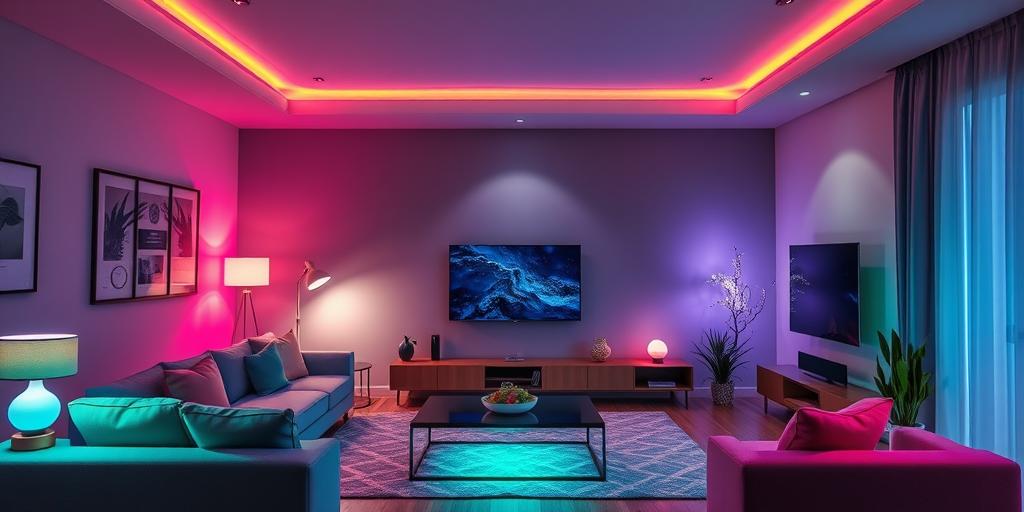Transform Your Home with Smart Lighting: A Beginner's Guide
Smart lighting can revolutionize your home, offering convenience, energy savings, and enhanced ambiance. If you're new to the world of smart lighting, this guide will walk you through the basics, helping you choose and set up the perfect system for your needs.
What is Smart Lighting?
Smart lighting refers to lighting systems that you can control remotely using a smartphone, tablet, or voice assistant. These systems typically consist of smart bulbs, switches, and hubs that connect to your home's Wi-Fi network.
Benefits of Smart Lighting
- Convenience: Control your lights from anywhere, set schedules, and automate lighting based on your routines.
- Energy Savings: Monitor energy usage, dim lights, and turn them off when not needed, reducing your electricity bill.
- Enhanced Ambiance: Customize lighting colors and brightness to create the perfect mood for any occasion.
- Security: Simulate occupancy when you're away from home to deter potential intruders.
Key Components of a Smart Lighting System
- Smart Bulbs: These bulbs connect directly to your Wi-Fi or through a smart hub and can be controlled individually.
- Smart Switches: Replace your existing light switches with smart switches to control traditional bulbs. These can also be controlled remotely.
- Smart Hubs: Some smart lighting systems require a hub to connect the bulbs and switches to your network. Hubs provide a central point of control and often offer additional features.
- Control App: Most smart lighting systems come with a mobile app that allows you to control your lights, set schedules, and customize settings.
Choosing the Right Smart Lighting System
- Compatibility: Ensure the system is compatible with your existing smart home ecosystem (e.g., Amazon Alexa, Google Assistant, Apple HomeKit).
- Features: Consider the features that are important to you, such as color customization, dimming, and scheduling.
- Ease of Use: Look for a system that is easy to set up and use, with a user-friendly app.
- Cost: Smart lighting systems range in price, so set a budget and compare options within your price range.
Setting Up Your Smart Lighting System
- Install Smart Bulbs or Switches: Replace your existing bulbs or switches with the smart versions.
- Connect to Your Network: Follow the manufacturer's instructions to connect the bulbs or switches to your Wi-Fi network or smart hub.
- Download the Control App: Download the app associated with your smart lighting system.
- Configure Your Settings: Use the app to customize your settings, create schedules, and integrate with other smart home devices.
Tips for Maximizing Your Smart Lighting Experience
- Create Scenes: Group lights together to create custom scenes for different activities, such as "Movie Night" or "Dinner Party."
- Automate Schedules: Set schedules to turn lights on and off automatically based on your daily routines.
- Use Voice Control: Integrate your smart lighting system with a voice assistant for hands-free control.
- Monitor Energy Usage: Keep track of your energy consumption to identify areas where you can save even more.
Conclusion
Smart lighting offers a blend of convenience, energy efficiency, and ambiance control that can significantly enhance your home. By understanding the basics and carefully selecting the right system, you can transform your living space into a smart, energy-efficient, and comfortable environment.









